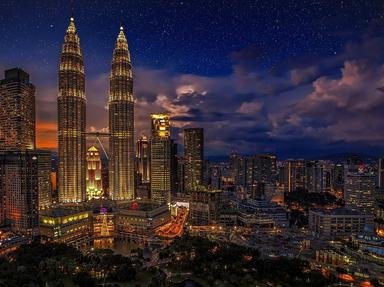Quiz Answer Key and Fun Facts
1. The British occupied Malaya for a long time, and the locals, of course, did not welcome them so easily. What was NOT one of the actions that got the locals really furious?
2. Dol Said of Naning was one of the many people of Malaya to resist British rule in Malaya. Why did he start his struggle?
3. In Sarawak, James Brooke became the first "White King [or Rajah] of Sarawak". In 1842, he attempted to seize control of a few settlements in Sarawak. A native warrior named Rentap resisted his rule by ...?
4. Mat Salleh was a district chief of Tambunan and River Sugut. The British East-Borneo Company (SBUB) settled in his territory and launched a tax system and messenger boats. How did Mat Salleh react to these?
5. Leading the Murut population in Sabah was Antanom. His resistance towards the SBUB (Syarikat Borneo Utara British - British North Borneo Company) was known as the Rundum Uprising. Why did this uprising happen?
6. One of the most famous of all heroes in Malaya was Dato' Maharaja Lela. He led a revolt against British forces in Pasir Salak, Perak, one of the many regions occupied after the Pangkor Treaty of 1874. Who was the British Resident of Perak who was killed by Dato' Maharaja Lela in 1875?
7. In Negeri Sembilan, the British occupied Ujong River. A state of conflict existed between the "Dato' Kelana" of Ujong River and the "Dato' Syahbandar". Which side did the British support?
8. Dato' Bahaman defied British rule in Pahang with a series of acts of resistance. Why did he begin this resistance in the first place?
9. Tok Janggut was another famous hero of the fight against British rule. What was one of the factors of his resolve against them?
10. Haji Abdul Rahman Limbong resisted the British in Terengganu after the usual tax collections and land laws by the British. an armed insurrection followed in May 1928, allowing Limbong to take Kuala Berang. How did the British react?
11. What was the role of the global Pan-Islam movements?
12. The Japanese are seen as a catalyst for Malayan nationalism. What aspect of Japanese rule made them extremely unpopular and made many Malayans determined to gain independence?
13. For fourteen days prior to the British return to Malaya, the Malayan Communist Party occupied Malaya. It was a bloody rule. Police stations were controlled by the Communists and many people were either captured or killed. Who were the main victims in this dark time?
14. What was the role of the Islah Movement?
15. The 'Kaum Muda' (Youth Group) was opposed by the 'Kaum Tua' (Old Group).
What were their differences from the Youth Group?
16. What was the importance of articles, magazines and novels in Malaya, other than to spread nationalism?
17. What was the significance of the Malayan People's Anti-Japanese Army (MPAJA)?
18. The 'Kesatuan Melayu Muda' (KMM) was the first Malayan political party in Malaya. Led by Ibrahim Haji Yaakob, they cooperated with the Japanese. What was their true goal?
19. The Indonesian Peninsular People Union (Kesatuan Rakyat Indonesia Semenanjung, or KRIS) wanted to realize a Greater Indonesia. However, it did not come to fruition. Why?
20. What is the importance of understanding the history of one's country?
Source: Author
WW2Master123
This quiz was reviewed by FunTrivia editor
bloomsby before going online.
Any errors found in FunTrivia content are routinely corrected through our feedback system.

